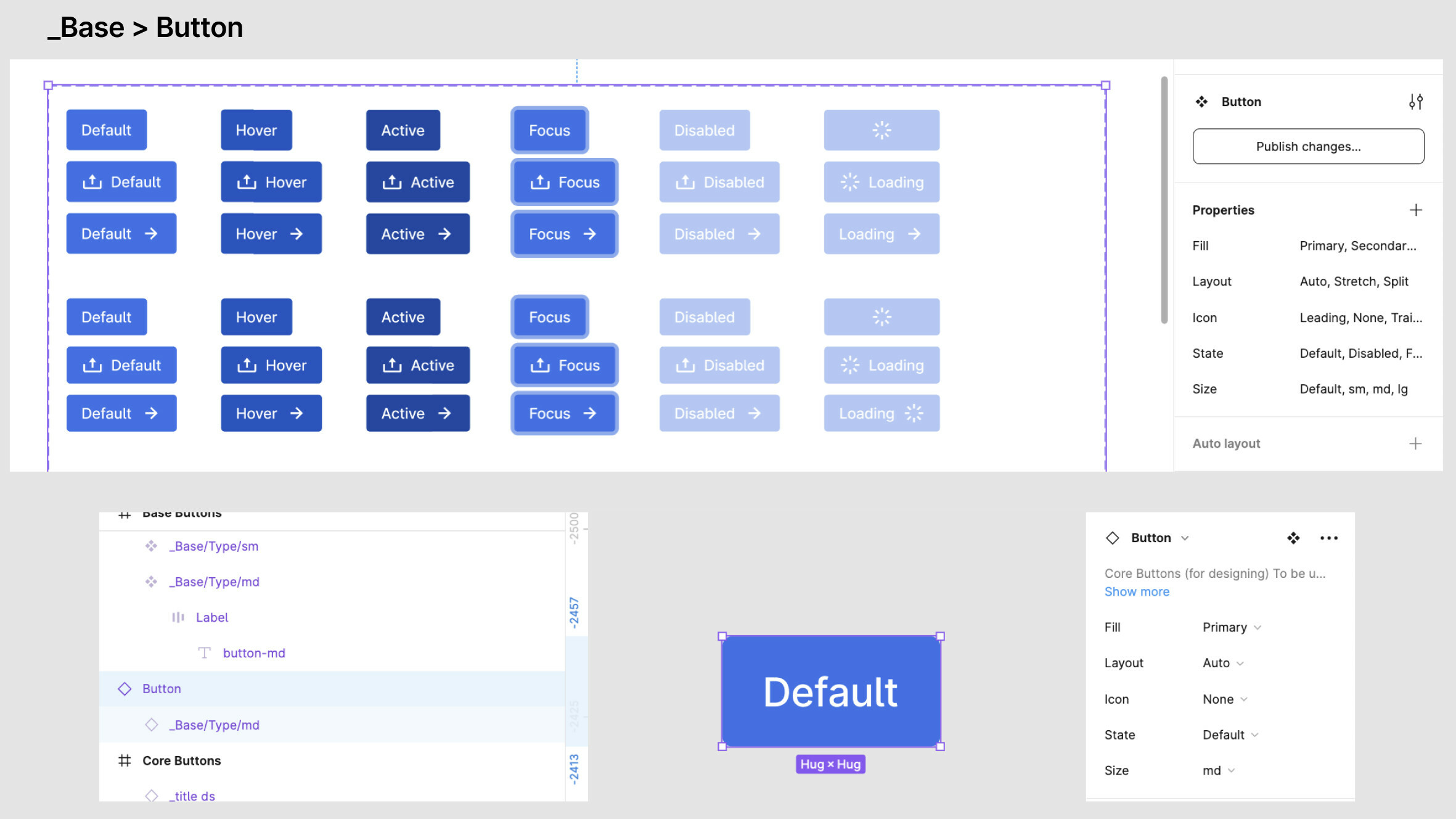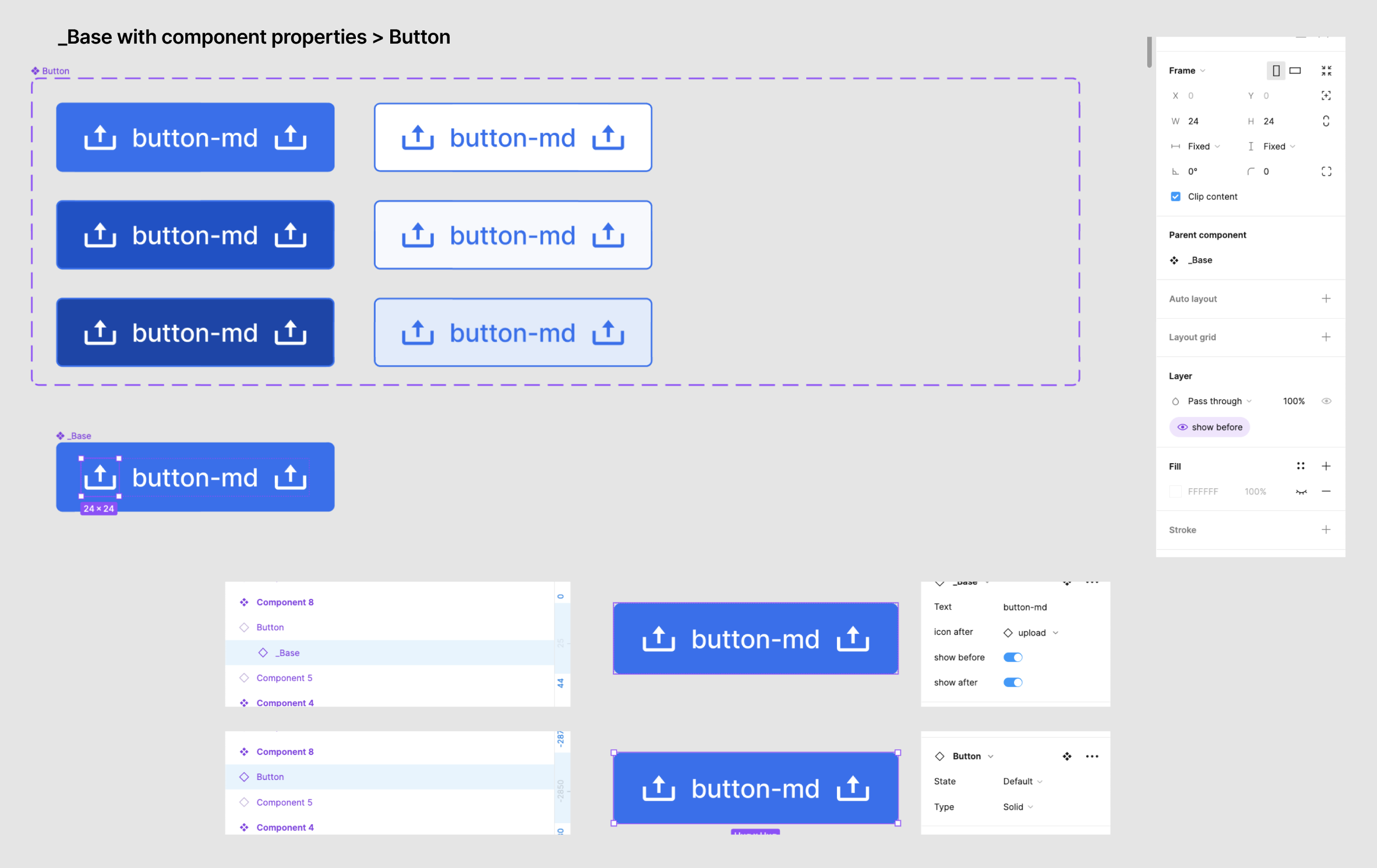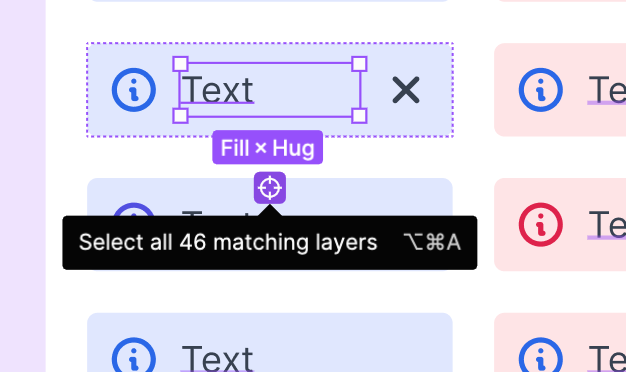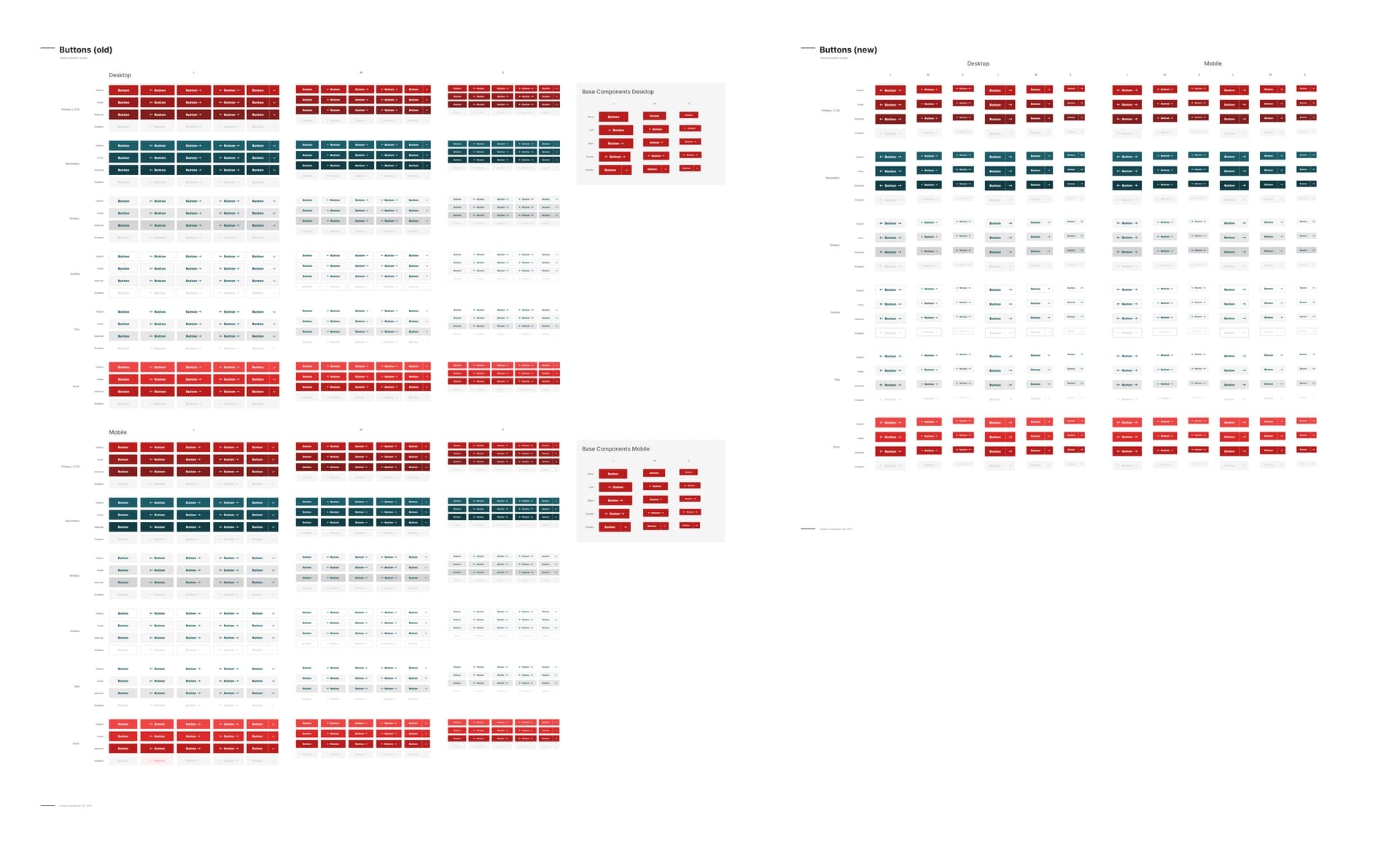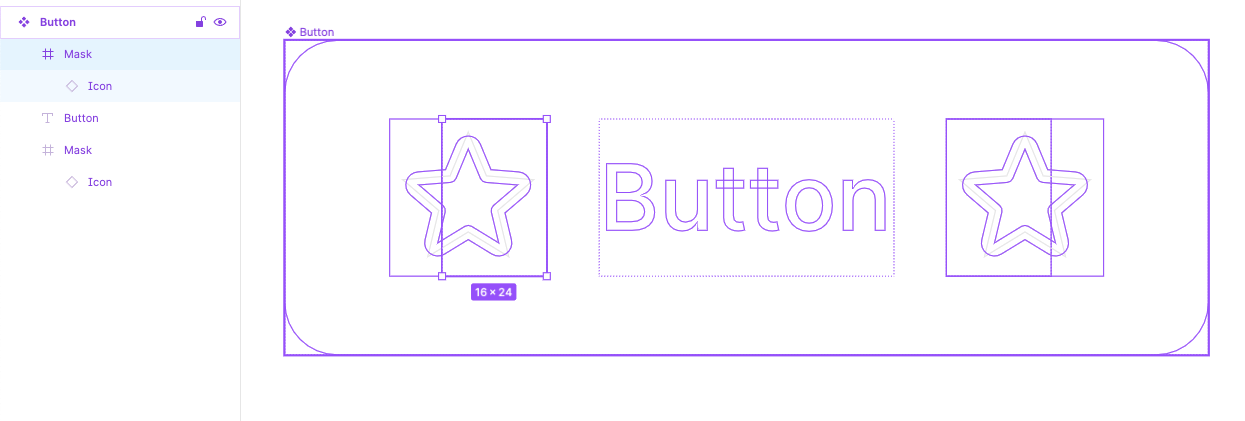My team has been using _base components as master components to pull from and make all our button variations, so _base-buttons are nested within all core-button components.
With the new component properties feature, we added the component properties to the _base-button component. However we noticed that the properties selection changes from the variant component level, to both variant component as well as base component.
So previously, we could change states and other properties such as trailing/leading icons from the same panel. But now we can only change states from the top layer, and have to click into the layer below to change these component properties.
We’re wondering how other teams with a similar build and workflow have integrated the component properties feature into their components now. One way we considered was making component properties in all the variants, but it’s super tedious.
Would love to hear from other teams!! Hope I’m making sense haha


